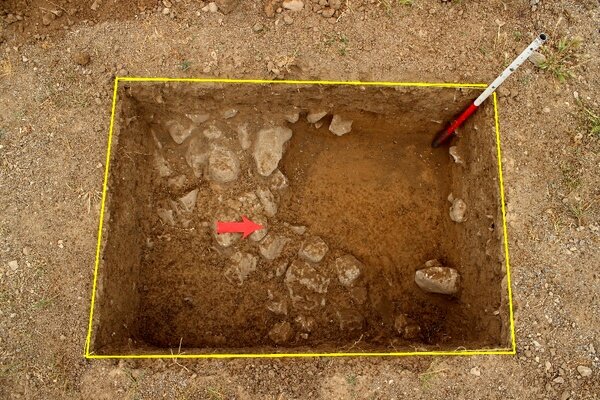Historical sites in Ilam demarcated

TEHRAN – New boundaries have been defined for two historical sites in the western province of Ilam, Iranian archaeologist Aref Biglari has said.
The historical sites of Bakhnam 1 and 2, which have been inscribed on the national heritage list, have recently been demarcated, Biglari explained on Sunday.
Dating back to the Sassanid era (224 CE–651) and Ilkhanid period (1256 to 1335), the sites are located near Chalsara Village, next to Godar Khosh River, he added.
To prevent further destruction and ensure better preservation, a demarcation project is essential as urbanization continues to encroach upon historical sites, he noted.
The Sassanid era (224 CE–651) is of very high importance in the history of Iran. Under Sassanids, Persian art and architecture experienced a general renaissance. Architecture often took grandiose proportions, such as palaces at Ctesiphon, Firuzabad, and Sarvestan, which are amongst the highlights of the ensemble.
Crafts such as metalwork and gem engraving grew highly sophisticated, yet scholarship was encouraged by the state. In those years, works from both the East and West were translated into Pahlavi, the language of the Sassanians.
Rock-carved sculptures and bas-reliefs on abrupt limestone cliffs are widely deemed as characteristics and striking relics of Sassanian art, top examples of which can be traced at Bishapur, Naqsh-e Rostam, and Naqsh-e Rajab in southern Iran.
In 2018, UNESCO added an ensemble of Sassanian historical cities in southern Iran — titled “Sassanid Archaeological Landscape of Fars Region”-- to its World Heritage list. The ensemble comprises eight archaeological sites situated in three geographical parts of Firuzabad, Bishapur, and Sarvestan. It reflects the optimized utilization of natural topography and bears witness to the influence of Achaemenid and Parthian cultural traditions and Roman art, which later had a significant impact on the architecture and artistic styles of the Islamic era.
The Ilkhanid dynasty, also called Il-Khanid, was a Mongol dynasty that ruled Iran from 1256 to 1335. Il-Khan is Persian for "subordinate khan".
Hulegu, a grandson of Genghis Khan, received orders from the supreme Mongol chieftain Mongke to conquer Iran. Hulegu set out around 1253 with a Mongol army of about 130,000 men. He founded the Il-Khanid dynasty in 1256 and conquered Baghdad and all of Iran by 1258, according to Britannica.
The Il-Khanids consolidated their position in Iran and unified the region as a political and territorial entity after several centuries of fragmented rule by small dynasties. During the reign of the Il-Khanid Maumud Ghuzun (r. 1295-1304), the Il-Khanids lost all contact with the remaining Mongol chiefs in China. Mahmud Ghuzun himself embraced Sunni Islam, and his reign was a time of Iranian cultural renaissance in Iran, with scholars such as Rashid al-Din flourishing under his patronage.
Ghazan's brother Oljeitu (r. 1304-16) converted to Shia Islam in 1310. Oljeitu's conversion caused great unrest, and when he died in 1316, the civil war was imminent. His son and successor, Abu Sa'id (r. 1317-35), converted to Sunni Islam and was thus able to prevent a war.
During Abu Sa'id's reign, however, factional disputes and internal unrest continued to spread. Abu Sa'id died without leaving an heir, and with his death, the unity of the dynasty was broken. Thereafter, various Il-Khanid princes ruled parts of the dynasty's former territory until 1353.
Home to almost half of Iran’s UNESCO sites, western Iran is a land of hospitable people, wild extremes, and wilder history, and it may be an independent traveler's adventure playground. The region also witnessed the rise and fall of many great empires once bordering Mesopotamia, Ottoman Turkey, and Czarist Russia.
From the fecund Caspian coast to the stark, mountainous northern borders, and the crumbling desert ruins of the southern plains, the region hosts everything from paddy fields to blizzards to Persian gardens.
ABU/AM
Leave a Comment